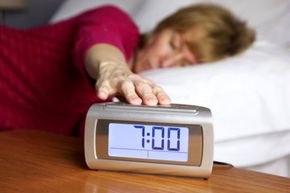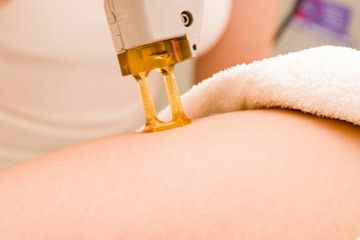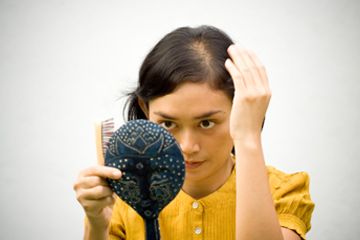Think of those mornings when you hit the snooze button a few too many times, and you wake up with barely enough time to pull on some clothes and rush out the door to the office. Thanks perhaps to some perverse joke being played by the goddess of coiffures, those frantic occasions also tend to coincide with your worst cases of bed head, when the sebaceous glands attached to your hair follicles have unleashed an oil slick worthy of the Exxon Valdez. Your 100,000 to 120,000 or so hairs, weighted down with that oil -- which is really a combination of accumulated cell debris, chemical components of sweat and various tiny pieces of dirt picked up from the air -- are protruding every which way, creating a look reminiscent of the lead character in the Calvin & Hobbes comic strip [source: Zviak]. And you don't have the time to shampoo and rinse your rebellious locks in the shower and then carefully dry and reshape them.
Well, don't go to pieces. Hair care technology has an ingenious solution for you: dry shampoo, a water-free way to freshen and restyle your hair when you don't have time for a leisurely scrub. Just sprinkle or spray the preparation on your hair, wait a few moments for it to absorb the oil and other gunk that sticks to it, and then brush or blot it out. Dry shampoo enthusiasts, of whom there seem to be a growing number, insist that some of their favorite designer brands will give your hair a shiny, bouncy volume that's nearly as good as what a stint under the shower nozzle would accomplish [source: Kato]. Beyond that, the latest pearl of wisdom from hair care gurus is that a daily wash-and-rinse with a detergent shampoo may strip away too much natural oil from your hair, which is bad news for the 80 percent of Americans who wash daily [source: Bouillon]. Follicular fashionistas are reverting to the once-a-week hair-washing regimen of decades ago, when stylish dames went to salons. Between salon visits, dry shampoos are enough to keep you looking good, according to proponents [source: Grossman].
Advertisement
Are they right or are they just looking for once-a-week customers at their salons? What are the pros and cons of dry shampoo?
Advertisement



